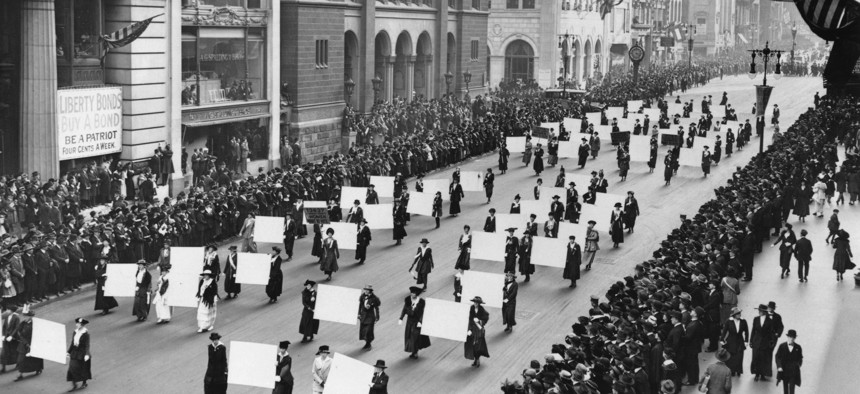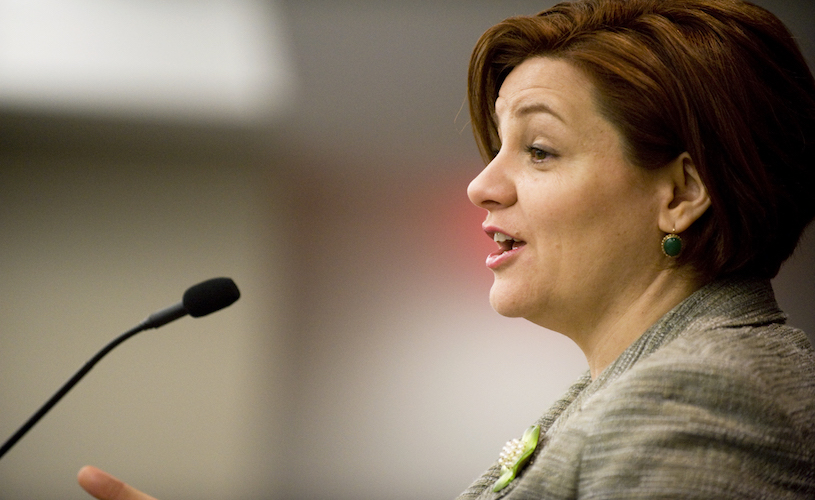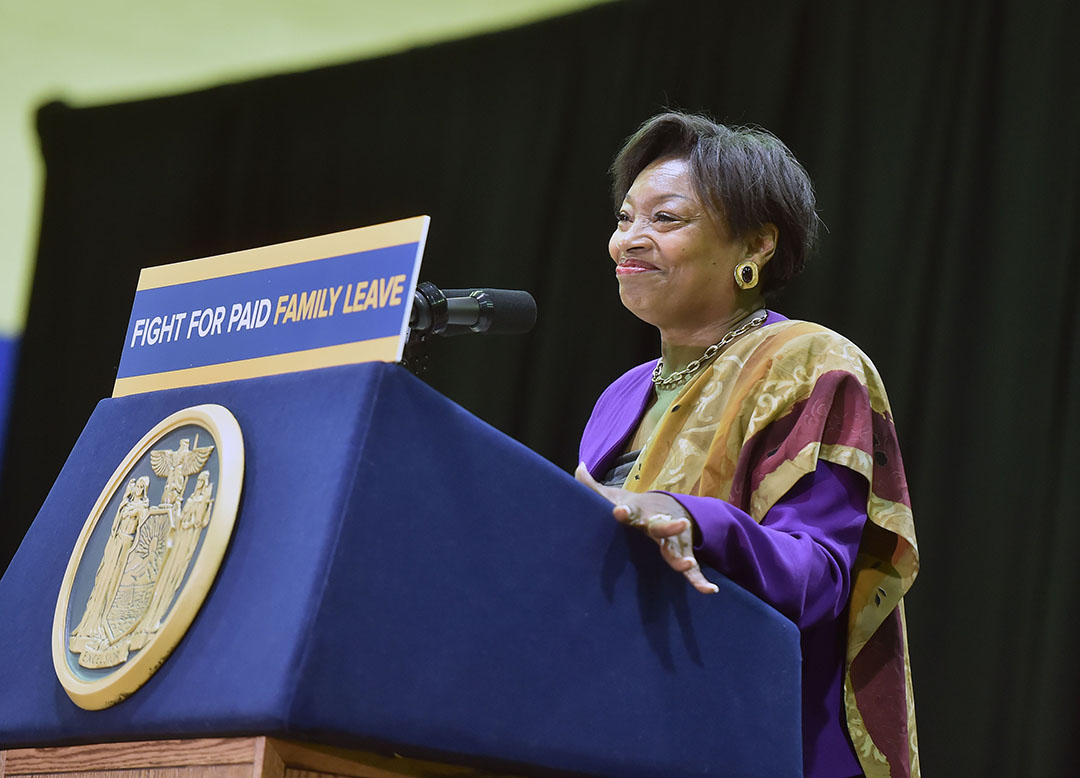New York City
The history of women’s representation in New York
From suffragettes to Congress, a timeline of women in New York politics.

Suffragists march down Fifth Avenue in October 1917, displaying placards containing the signatures of more than 1 million New York women demanding the right to vote. The New York Times/Redux
Over a century ago, on Nov. 6, 1917, women won the right to vote in New York. That meant having to convince New York voters – all men, at the time – to support the cause. Today, women are still underrepresented in just about every level of government, both in New York and on the national level. Here’s a look at how far women in New York have come – and how much further they need to go.
RELATED: For women, the fight for equality in politics continues
1848 – The first women’s rights convention in the country is held in Seneca Falls, New York. A group of attendees sign the Declaration of Sentiments, which was written by Elizabeth Cady Stanton, declaring equal rights for women.
![Elizabeth Cady Stanton [sitting] and Susan B Anthony. Elizabeth Cady Stanton [sitting] and Susan B Anthony.](/media/csny/cady-stanton-susan-b-anthony-wikicommons.jpg)
1914 – Katharine Bement Davis is appointed commissioner of the New York City Department of Correction, becoming the first woman to lead a city agency.
1915 – The first referendum is held to decide whether women should be given the right to vote in New York state, but the measure fails.
1917 – The second referendum on women’s suffrage in New York is held, and this time, it passes.
1919 – Mary Lilly and Ida Sammis become the first women to serve in the Assembly.
1920 – The 19th Amendment is ratified, giving women the right to vote across the U.S.
1929 – Ruth Pratt becomes the first woman from New York to serve in the House of Representatives.
1935 – Rhoda Fox Graves is the first woman to serve in the state Senate.
1938 – Genevieve Earle becomes the first woman in the New York City Council.
1969 – Shirley Chisholm of New York becomes the first black woman to serve in Congress.

1972 – Chisholm is the first black American to run for president of the United States and the first woman to run for the Democratic Party’s nomination.
1974 – Mary Anne Krupsak becomes the first female lieutenant governor in New York.
1984 – Geraldine Ferraro, a representative from Queens, becomes the first female major party nominee on a presidential ticket as the Democratic nominee for vice president.
![Vice-presidential candidate Geraldine Ferraro [right] with presidential candidate Walter Mondale at a political rally in 1984. Vice-presidential candidate Geraldine Ferraro [right] with presidential candidate Walter Mondale at a political rally in 1984.](/media/csny/geraldine-ferraro-walter-mondale-wikkicommons.jpg)
1993 – Judith Kaye, who was appointed the first female judge on the New York State Court of Appeals in 1983, is named the first female chief judge of the state’s highest court.
2001 – Hillary Clinton becomes the first woman to serve in the U.S. Senate from New York.
2006 – Christine Quinn becomes the first woman and first openly gay member to serve as speaker of the New York City Council.

2012 – Andrea Stewart-Cousins becomes the first woman to lead a party conference in the state Legislature.

2016 – Clinton becomes the first woman to be nominated by a major party for president.
2018 - Letitia James becomes the first woman elected attorney general of New York.
2019 - Stewart-Cousins is elected state Senate majority leader, becoming the first woman to lead a majority conference in the state Legislature.

NEXT STORY: Why these New York politicians are backing Beto